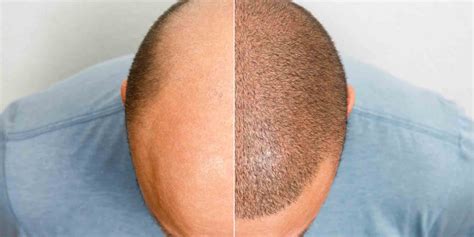Introduction
Hair loss is a common concern for men, affecting millions worldwide. Whether it’s due to genetics, age, or medical conditions, thinning hair can significantly impact a man’s self-esteem and overall well-being. Fortunately, modern hair replacement techniques offer effective and long-lasting solutions to restore fullness and confidence.

Understanding Hair Loss and Its Causes
Hair loss, clinically known as alopecia, can manifest in various forms. Some of the most prevalent types include:
- Androgenetic alopecia (male pattern baldness): This hereditary condition, affecting over 50% of men by age 50, is characterized by gradual hair thinning and recession at the temples and crown.
- Alopecia areata: An autoimmune disorder that causes patchy hair loss, often affecting young adults and children.
- Telogen effluvium: A temporary condition where hair enters the resting phase (telogen) prematurely, resulting in excessive shedding.
- Traction alopecia: Occurs when hair follicles are damaged by repeated pulling, such as from tight ponytails or braids.
The Impact of Hair Loss on Men’s Lives
Hair loss can have profound psychological and social implications for men:
- Reduced self-esteem: Many men equate a full head of hair with virility and confidence, and its loss can lead to feelings of low self-worth.
- Social anxiety: Thinning hair can make men feel self-conscious and less likely to participate in social situations.
- Career limitations: In some industries, a professional appearance is highly valued, and hair loss may be perceived as a disadvantage.
Exploring Hair Replacement Options
Medical advancements have led to innovative hair replacement techniques that provide natural-looking and permanent solutions:
- Surgical Hair Transplantation: This involves harvesting healthy hair follicles from a donor area on the scalp and transplanting them into balding regions.
- Non-Surgical Hair Transplantation (Neograft/ARTAS): Utilizes advanced technology to extract individual hair follicles and implant them without making incisions.
- Platelet-Rich Plasma (PRP) Therapy: Involves injecting platelet-rich plasma into the scalp to stimulate hair growth.
- Laser Therapy: Low-level lasers can promote hair follicle regeneration and reduce inflammation.
- Finasteride/Minoxidil: Prescription medications that slow hair loss and promote regrowth.
Factors to Consider When Choosing a Hair Replacement Method
The best hair replacement option depends on individual factors such as:
- Age
- Extent of hair loss
- Medical history
- Lifestyle
- Financial circumstances
Table 1: Comparison of Hair Replacement Methods
| Method | Results | Cost | Duration | Recovery Time |
|---|---|---|---|---|
| Surgical Hair Transplantation | Permanent | Higher | Multiple sessions | Several weeks |
| Non-Surgical Hair Transplantation | Permanent | Moderate | One session | Minimal |
| PRP Therapy | Gradual | Moderate | Multiple sessions | Minimal |
| Laser Therapy | Gradual | Low | Multiple sessions | None |
| Medications (Finasteride/Minoxidil) | Variable | Low | Daily use | None |
Table 2: The Psychological Impact of Hair Loss on Men
| Aspect | Percentage of Men Affected |
|---|---|
| Reduced Self-Esteem | 68% |
| Social Anxiety | 52% |
| Career Limitations | 35% |
Innovative Approaches to Hair Replacement
Beyond traditional methods, researchers are exploring novel solutions:
- 3D Printing: Bioprinting hair follicles using stem cell technology.
- Gene Therapy: Manipulating genes to promote hair growth.
- Nanotechnology: Using nanoparticles to deliver nutrients to hair follicles.
Table 3: Future Directions in Hair Replacement Research
| Approach | Potential Benefits |
|---|---|
| 3D Printing | Customizable hair replacement |
| Gene Therapy | Permanent hair growth |
| Nanotechnology | Targeted drug delivery |
The Future of Hair Replacement
The future of hair replacement holds promising advancements:
- Personalized Treatments: Treatment plans tailored to individual hair loss patterns and genetics.
- Non-Invasive Solutions: Minimally invasive or non-surgical methods with shorter recovery times.
- Affordable Options: Increased accessibility through insurance coverage and cost-effective technologies.
Customer-Centric Strategies
Successful hair replacement services focus on meeting customer needs:
- Individualized Consultations: Comprehensive assessments to understand patient goals and concerns.
- Empathetic Care: Providing a supportive and non-judgmental environment.
- Transparent Communication: Clear explanations of procedures, costs, and expected results.
- Follow-Up Support: Regular check-ups to ensure patient satisfaction and address any concerns.
Table 4: Effective Strategies for Customer Satisfaction in Hair Replacement
| Strategy | Benefits |
|---|---|
| Individualized Consultations | Tailored treatments and increased patient confidence |
| Empathetic Care | Positive patient experience and improved outcomes |
| Transparent Communication | Reduced anxiety and realistic expectations |
| Follow-Up Support | Enhanced patient satisfaction and long-term success |
Conclusion
Hair restoration has evolved significantly, offering men effective and long-lasting solutions to address hair loss. By understanding the different causes and types of hair loss, evaluating hair replacement options, and considering innovative approaches, men can make informed decisions about restoring their confidence and well-being. With personalized treatment plans and customer-centric practices, hair replacement services can empower men to reclaim their youthful appearance and self-assurance.
